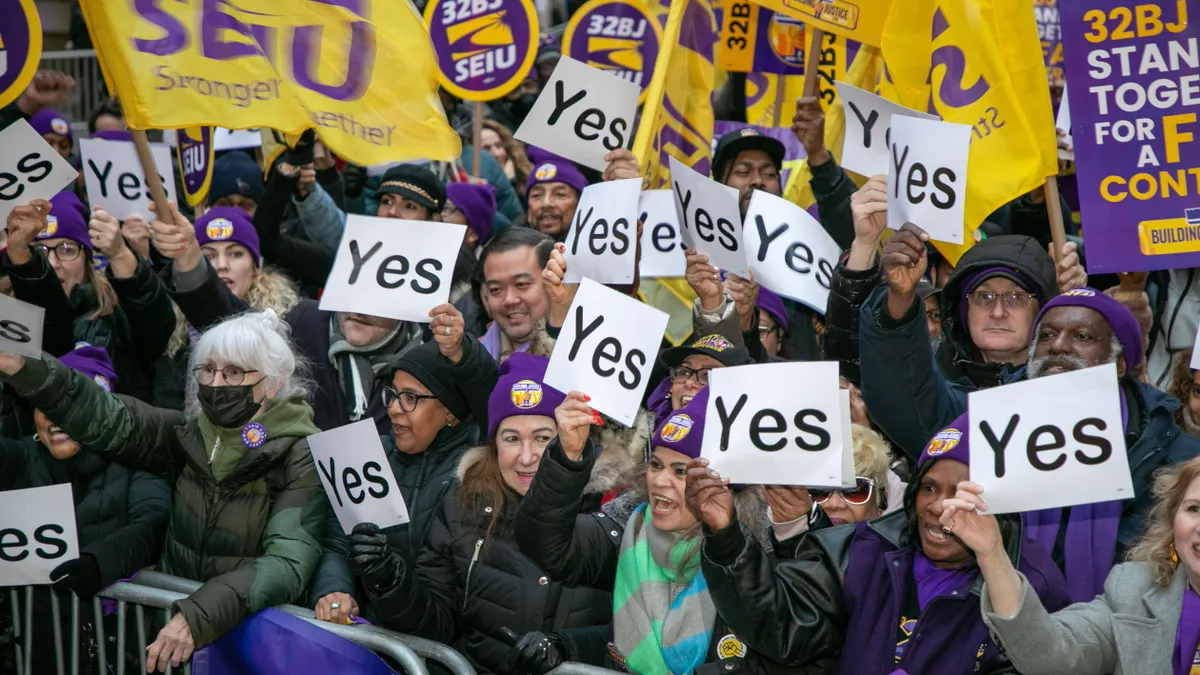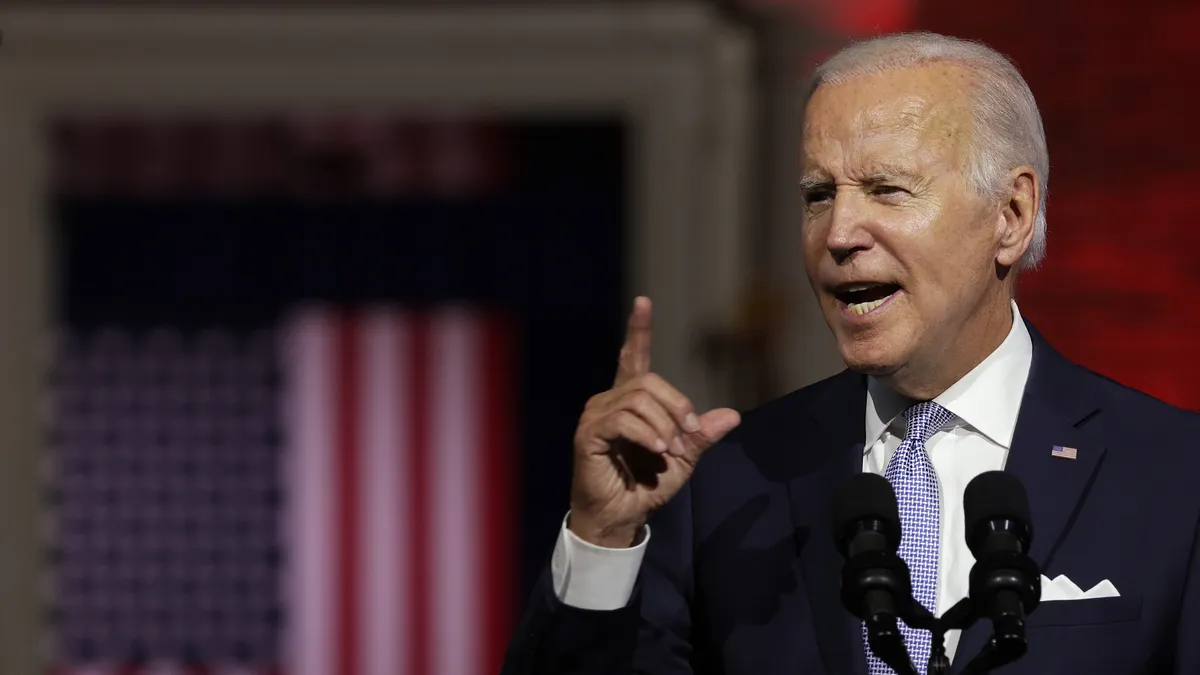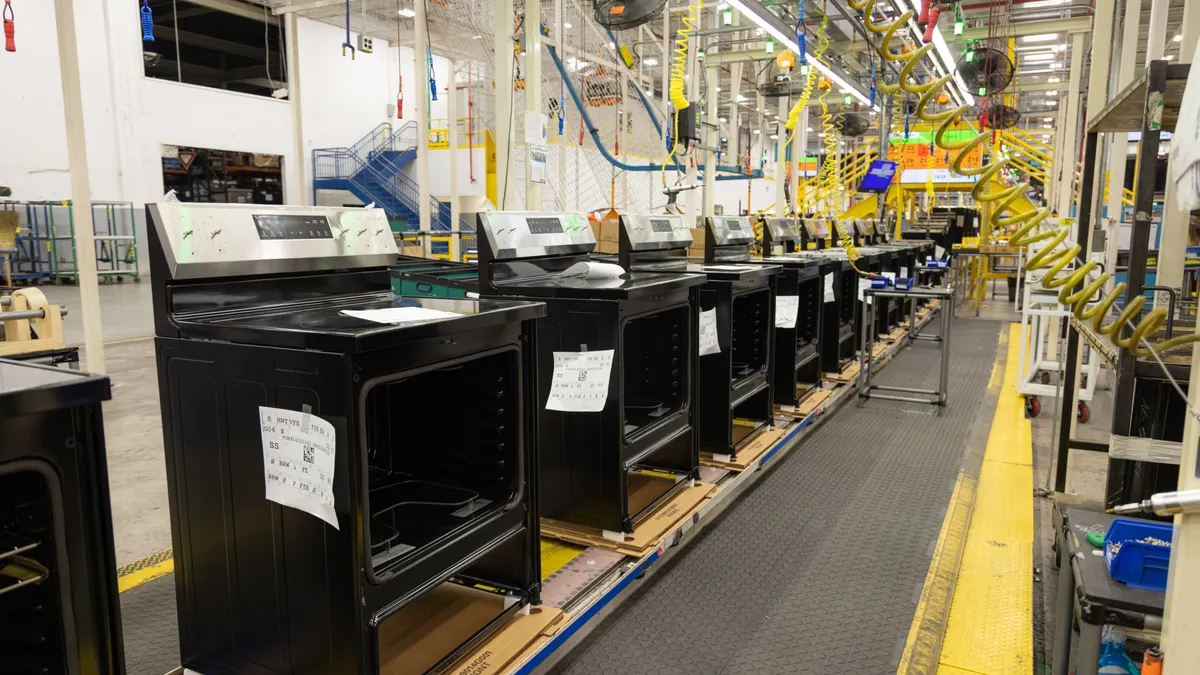The labor landscape has completely shifted over the past year, Cozen O’Connor attorneys David Barron, Kelly Kindig and Steven Millman emphasized during a March 21 webinar on the state of union organizing.
Not only are workers more fired up than ever, but a decision handed down from the National Labor Relations Board last August has changed the labor organizing process and raised the stakes for real or perceived employer misbehavior, the attorneys said.
The three outlined why worker organizing has employers on edge and what they should do — and just as crucially, not do — in the face of potential unionization.
A ‘sea change’ in the culture
The labor landscape looks so different in part because younger generations have breathed new life into labor organizing, Barron said, representing a “sea change” in the culture.
“Coming out of COVID, we had a lot of younger workers who were very involved in activism [and] social justice issues,” he said. “A lot of that enthusiasm has carried over into the workplace and we’ve seen unions really take advantage of building on that to increase the level of organizing.”
Support for unions is at its highest point now since 1965, he said. Younger workers are gaining distance from older relatives and acquaintances who may have been in unions and had unpleasant or more neutral experiences, so the “optimism and idealism [are] back and having a moment.”
While the Cozen O’Connor attorneys didn’t touch on it, it’s worth noting the confluence of factors — like wage stagnation, housing costs and student loan burdens — that have likely contributed to an upsurge in union interest. Most union-member respondents to a Gallup poll cited better pay and benefits as their top reason for joining a union.
Cemex changed the game
In the midst of union enthusiasm, the NLRB handed down a decision last year, Cemex Construction Materials Pacific, LLC, that has significantly shifted how employers must deal with labor organizing.
Before August 2023, there was typically “one traditional path” unions would take to organize employees, Millman said. After Cemex, unions have been given a “much simpler and much more expeditious path.”
Traditionally, unions would collect union authorization cards. If 30% of a company’s workforce signed such cards, the union could file a representation petition with the NLRB, triggering a secret ballot election conducted by an NLRB agent. Typically, such an election would occur six weeks or more after the petition was filed, allowing both the company and the union to campaign and attempt to rally support.
While this path is still available, unions have a new strategy following Cemex: Now, if a union obtains authorization cards from a majority of workers, it can demand recognition from an employer. The employer can then either voluntarily recognize the union or file a petition for a secret ballot election with the NLRB. Employers have two weeks to file the petition.
From there, three things could happen, Millman explained — one, employees could vote for union representation; two, under a more private voting structure, employees could vote against union representation and the workplace would remain without a union; or three, crucially, employees could vote against union representation but the employer could engage in some kind of unlawful practice, causing the NLRB to dismiss the election petition and issue a bargaining order requiring the employer to bargain with the union.
In other words, there are now paths to unionization without a secret ballot election, and in one case, without a majority of workers voting for representation. “It is really a new world we’re living in,” Millman said.
The list of ‘don’ts’ is long
Given the new pathways available to union organizers, employers need to be extremely careful about their conduct when labor organizing efforts are underway, the attorneys said. The NLRB has been clear that an unlawful act need not be “substantial or numerous” to trigger a dismissal. “It could be something small,” Barron said.
While employers have a right to communicate about unions, the attorneys offered the “TIPS” rule for what to avoid: threatening, interrogating, promising or spying.
Threatening employees can involve any threat to or decision about employment, pay, benefits or opportunities with the intention of dissuading union support. Interrogating can involve inquiring about pro-union colleagues. Similarly, spying can involve eavesdropping on conversations between workers or on pro-union meetings.
Not promising can “often be a trip hazard” for employers, Kindig said, as it can seem a more benign approach. “Employers often want to institute pay increases or improve working conditions after they learn about union organizing,” she said. But such promises on an employer’s part can be construed as “just promising better benefits to try to stave off some organizing activity.” By the time workers are organizing, it’s too late to make promises.
What can employers do?
When it comes to what employers can do in navigating labor organizing, the attorneys offered up another acronym, LOGS: listen, observe, gather and speak up.
Employers can listen to what employees are saying and to their concerns — not just about unions, but about their working conditions. Without crossing the line into surveillance, it’s fine to observe how employees are behaving. And gathering information to provide to the HR and legal departments is important so the company can make important decisions about any steps that may need to be taken, Kindig said.
Finally, employers can speak up. Fearful of unlawful practice charges, employers often clam up entirely in the face of labor organizing efforts. But this can be a mistake, Kindig said, and employers do have a right to certain kinds of communications. Specifically, they can share publicly available facts about the NLRB process and real examples and stories that highlight the realities of how a union becomes all eligible employees’ bargaining representative. Employers can even share their personal views on unions.
“A message that employers often try to deliver to employees is to say, ‘Hey, we want to be able to deal directly with you right now.’ And it’s okay to do that,” Kindig said.
Get ahead of the game
While employers have options in the midst of an organizing effort, the attorneys agreed that for employers who hope to keep a nonunionized workplace, the best time to start is long before organizers are across the street handing out pamphlets. In 2023, unions won 1,152 of 1,391 elections, Barron said, for a comfortable win rate of 83%.
Pre-organizing, employers can review their solicitation and distribution policy, train managers on effective ways to communicate with employees, reaffirm an open-door policy and ensure employees have clarity on their benefits. On the other end of the spectrum, Kindig said, employers can choose to have full-scale conversations on unionization and what the company thinks about it.
Employers “really need to be thinking about proactive measures,” Barron said. “If you’re seeing signs of union activity, you’re probably too late.”





















